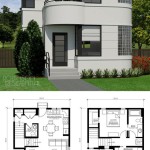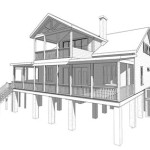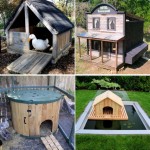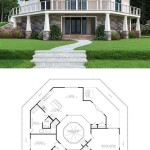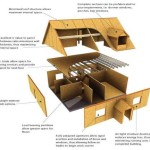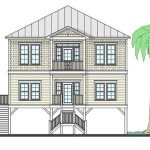House designs floor plans are a visual representation of a house’s layout, including the placement of rooms, walls, windows, and doors. They are used by architects, builders, and homeowners to plan and construct new homes or to renovate existing ones. Floor plans are typically drawn to scale and include detailed measurements and specifications, making them an essential tool for planning and construction.
Floor plans can be used for a variety of purposes, such as:
- Planning the layout of a new home
- Renovating an existing home
- Adding an addition to a home
- Creating a home office or other workspace
In the following sections, we will discuss the different types of floor plans, their uses, and how to create a floor plan for your own home.
When creating a house design floor plan, there are several important points to keep in mind:
- Scale: The floor plan should be drawn to scale so that measurements are accurate.
- Measurements: Include detailed measurements for all rooms, walls, windows, and doors.
- Layout: The layout should be functional and efficient, with rooms flowing logically into one another.
- Traffic flow: Consider the flow of traffic through the house, and make sure that there are no bottlenecks or awkward transitions.
- Natural light: Position windows and doors to maximize natural light and create a bright and inviting space.
- Privacy: Consider the privacy of each room, and make sure that private spaces are not overlooked by public spaces.
- Storage: Include adequate storage space throughout the house, such as closets, pantries, and built-in shelves.
- Exterior connections: Plan for exterior connections, such as patios, decks, and porches, to extend the living space outdoors.
By following these tips, you can create a house design floor plan that meets your needs and creates a beautiful and functional home.
Scale: The floor plan should be drawn to scale so that measurements are accurate.
The scale of a floor plan refers to the ratio between the size of the drawing and the actual size of the building. It is important to draw a floor plan to scale so that measurements are accurate and the plan can be used for construction purposes. The most common scales used for floor plans are 1/4 inch = 1 foot, 1/8 inch = 1 foot, and 1/16 inch = 1 foot. This means that 1/4 inch on the drawing represents 1 foot in the actual building, 1/8 inch on the drawing represents 1 foot in the actual building, and so on.
- Benefits of drawing a floor plan to scale:
There are several benefits to drawing a floor plan to scale, including:
- Accurate measurements: A scaled floor plan allows you to take accurate measurements of the building, which is essential for construction purposes.
- Easy to understand: A scaled floor plan is easy to understand and interpret, even for people who are not familiar with construction drawings.
- Can be used for planning and design: A scaled floor plan can be used for planning and design purposes, such as determining the placement of furniture and fixtures.
- How to draw a floor plan to scale:
To draw a floor plan to scale, you will need to:
- Choose a scale: The first step is to choose a scale for your floor plan. The most common scales used for floor plans are 1/4 inch = 1 foot, 1/8 inch = 1 foot, and 1/16 inch = 1 foot.
- Measure the building: Once you have chosen a scale, you will need to measure the building and record the measurements on a piece of paper.
- Draw the floor plan: Once you have the measurements, you can begin drawing the floor plan. Be sure to draw the plan to scale, using the measurements you recorded.
- Tips for drawing a floor plan to scale:
Here are a few tips for drawing a floor plan to scale:
- Use a ruler or measuring tape to ensure that your measurements are accurate.
- Draw the floor plan on a piece of graph paper to make it easier to keep the scale accurate.
- Use a light pencil to draw the floor plan so that you can erase mistakes easily.
- Conclusion:
Drawing a floor plan to scale is an important skill for anyone who is involved in construction or home design. By following the tips above, you can create a scaled floor plan that is accurate and easy to understand.
Measurements: Include detailed measurements for all rooms, walls, windows, and doors.
Detailed measurements are essential for a floor plan to be accurate and useful. Without measurements, it would be difficult to determine the size of the rooms, the placement of the walls, windows, and doors, and the overall layout of the house. Measurements should be included for all of the following:
- Rooms: The length, width, and height of each room should be measured and recorded on the floor plan.
- Walls: The length and height of each wall should be measured and recorded on the floor plan.
- Windows: The width, height, and location of each window should be measured and recorded on the floor plan.
- Doors: The width, height, and location of each door should be measured and recorded on the floor plan.
In addition to the basic measurements listed above, it is also helpful to include the following measurements on a floor plan:
- Ceiling heights: The height of the ceiling in each room should be measured and recorded on the floor plan.
- Window and door openings: The width and height of each window and door opening should be measured and recorded on the floor plan.
- Trim: The width and type of trim around each window and door should be measured and recorded on the floor plan.
By including detailed measurements on a floor plan, you can create a document that is accurate and easy to use for construction purposes.
Layout: The layout should be functional and efficient, with rooms flowing logically into one another.
The layout of a house is one of the most important factors to consider when designing a new home or renovating an existing one. A well-planned layout will create a home that is both functional and efficient, with rooms that flow logically into one another. Here are some tips for creating a functional and efficient layout:
1. Consider the natural flow of traffic. When designing the layout of your home, it is important to consider the natural flow of traffic. This means thinking about how people will move through the house on a daily basis, and making sure that the layout allows for easy and efficient movement. For example, the kitchen should be located near the dining room and living room, and the bedrooms should be located near the bathrooms. Walking from the kitchen to the dining room to deliver food should not need to go through the living room. Bedrooms should be separated from each other for privacy, and they should have clear paths to their bathrooms.
2. Create a central gathering space. Every home needs a central gathering space where family and friends can come together. This space can be the living room, the family room, or the kitchen, depending on the layout of the house. The important thing is to create a space that is comfortable and inviting, and that is large enough to accommodate everyone. The gathering space should be easily accessible from all other rooms in the house, and it should have plenty of natural light.
3. Make use of natural light. Natural light can make a home feel more spacious and inviting, and it can also help to reduce energy costs. When designing the layout of your home, be sure to take advantage of natural light by placing windows and doors in areas where they will get the most sunlight. Large windows in the living room will make the room feel more spacious and inviting. Windows in the kitchen will make cooking more enjoyable and will help to reduce energy costs. Be aware of the directions windows will face. Northern facing windows will receive the least amount of direct sunlight while southern facing windows will receive the most.
4. Consider your storage needs. Everyone needs storage space, so be sure to include plenty of closets, cabinets, and shelves in your home’s design. Storage space can be built into walls, under stairs, and even in the attic. The important thing is to have enough storage space to meet your needs without making your home feel cluttered.
Traffic flow: Consider the flow of traffic through the house, and make sure that there are no bottlenecks or awkward transitions.
The flow of traffic in a house is an important consideration when designing a floor plan. You want to make sure that people can move easily and efficiently from one room to another without having to navigate any awkward or congested areas. Here are some things to keep in mind when considering traffic flow:
- Main traffic areas: Identify the main traffic areas in your home, such as the hallways, doorways, and stairs. Make sure these areas are wide enough to accommodate people moving in both directions.
- Furniture placement: Be mindful of where you place furniture, as it can affect traffic flow. Avoid placing large pieces of furniture in the middle of walkways or doorways.
- Doorways and hallways: Make sure doorways and hallways are wide enough to accommodate people and furniture. A good rule of thumb is to make doorways at least 3 feet wide and hallways at least 4 feet wide.
- Transitions between rooms: Transitions between rooms should be smooth and easy to navigate. Avoid creating sharp corners or narrow passages that could cause people to bump into each other or furniture.
By considering traffic flow when designing your floor plan, you can create a home that is both functional and comfortable.
Natural light: Position windows and doors to maximize natural light and create a bright and inviting space.
Natural light can make a home feel more spacious and inviting, and it can also help to reduce energy costs. When designing your floor plan, be sure to take advantage of natural light by placing windows and doors in areas where they will get the most sunlight.
Here are some tips for maximizing natural light in your home:
- Place windows and doors on the south side of your home. The south side of your home will receive the most sunlight, so this is the best place to put windows and doors if you want to maximize natural light.
- Use large windows and doors. Larger windows and doors will let in more light than smaller ones. If you have the option, choose large windows and doors for your home.
- Avoid placing furniture or other objects in front of windows. If you place furniture or other objects in front of windows, you will block the light from coming in. Be sure to keep your windows clear so that you can take advantage of natural light.
- Use light-colored curtains or blinds. Dark-colored curtains or blinds will block out light, so it is best to use light-colored curtains or blinds if you want to maximize natural light.
By following these tips, you can create a home that is filled with natural light and that is both inviting and energy-efficient.
Paragraph after details:
In addition to the tips above, there are a few other things you can do to maximize natural light in your home:
- Use skylights. Skylights are a great way to add natural light to a room, especially if the room does not have any windows. Skylights can be installed in any room of the house, but they are most commonly used in kitchens, bathrooms, and living rooms.
- Use reflective surfaces. Reflective surfaces, such as mirrors and white paint, can help to bounce light around a room and make it feel brighter. Place mirrors opposite windows to reflect light back into the room, or use white paint on your walls and ceilings to create a brighter space.
- Keep your windows clean. Dirty windows will block out light, so be sure to keep your windows clean so that you can take advantage of natural light.
Privacy: Consider the privacy of each room, and make sure that private spaces are not overlooked by public spaces.
Privacy is an important consideration when designing a floor plan. You want to make sure that each room has a sense of privacy, and that private spaces are not overlooked by public spaces. Here are some things to keep in mind when considering privacy in your floor plan:
1. Separate public and private spaces. The first step to creating a private home is to separate public and private spaces. Public spaces, such as the living room, dining room, and kitchen, are typically open and accessible to everyone. Private spaces, such as bedrooms and bathrooms, are typically closed off and only accessible to certain people. When designing your floor plan, be sure to create a clear separation between public and private spaces.
2. Position private rooms away from public spaces. When positioning private rooms, try to place them away from public spaces. For example, the master bedroom should not be located next to the living room or kitchen. Instead, it should be placed in a more secluded area of the house, such as the back of the house or on the second floor.
3. Use hallways and doors to create privacy. Hallways and doors can be used to create privacy between different rooms. For example, a hallway can be used to separate the bedrooms from the living room, and a door can be used to separate the master bedroom from the rest of the house.
4. Use window treatments to control privacy. Window treatments, such as curtains and blinds, can be used to control privacy in a room. For example, you can use curtains to block the view into a bedroom from the outside, or you can use blinds to control the amount of light that enters a room.
Storage: Include adequate storage space throughout the house, such as closets, pantries, and built-in shelves.
Storage space is an essential part of any home. It allows you to keep your belongings organized and out of sight, and it can help to make your home feel more spacious and inviting. When designing your floor plan, be sure to include adequate storage space throughout the house.
- Closets: Closets are a great way to store clothes, shoes, and other personal belongings. When planning your floor plan, be sure to include closets in all of the bedrooms, as well as in the hallway and other common areas. Closets should be large enough to accommodate your needs, and they should be designed in a way that makes it easy to find what you’re looking for.
- Pantries: Pantries are a great way to store food and other kitchen supplies. When planning your floor plan, be sure to include a pantry in the kitchen. The pantry should be large enough to accommodate your needs, and it should be designed in a way that makes it easy to find what you’re looking for.
- Built-in shelves: Built-in shelves are a great way to add storage space to any room. They can be used to store books, movies, games, and other items. When planning your floor plan, consider adding built-in shelves to the living room, family room, or other common areas.
- Other storage solutions: In addition to closets, pantries, and built-in shelves, there are a number of other storage solutions that you can use to maximize storage space in your home. These include under-bed storage, over-the-door storage, and stackable storage bins.
By including adequate storage space in your floor plan, you can create a home that is both functional and inviting.
Exterior connections: Plan for exterior connections, such as patios, decks, and porches, to extend the living space outdoors.
Exterior connections, such as patios, decks, and porches, can extend the living space of a home outdoors and provide a place to relax, entertain, and enjoy the fresh air. When planning your floor plan, be sure to consider how you want to use your outdoor space and design the exterior connections accordingly.
Patios are typically constructed on the ground level and can be made of a variety of materials, such as concrete, brick, or pavers. Patios are a great option for creating a seating area or dining area outdoors. They can also be used for grilling or other outdoor activities.
Decks are similar to patios, but they are elevated off the ground. Decks are typically made of wood or composite materials. They are a great option for creating a seating area or dining area with a view. Decks can also be used for grilling or other outdoor activities.
Porches are covered outdoor areas that are attached to the house. Porches can be screened in or open air. They are a great option for creating a shaded seating area or dining area outdoors. Porches can also be used for relaxing or entertaining.
When planning your exterior connections, be sure to consider the following factors:
- Size: The size of your exterior connections will depend on how you plan to use them. If you plan to use them for entertaining, you will need a larger space than if you just plan to use them for relaxing.
- Location: The location of your exterior connections will depend on how you want to use them. If you want to use them for grilling, you will need to place them near the kitchen. If you want to use them for relaxing, you may want to place them in a more private area of the yard.
- Materials: The materials you use for your exterior connections will depend on your budget and your personal preferences. Concrete and brick are durable materials that can last for many years. Wood and composite materials are less durable, but they are also less expensive.
By carefully planning your exterior connections, you can create a beautiful and functional outdoor space that will extend the living space of your home and provide a place to relax, entertain, and enjoy the fresh air.









Related Posts

